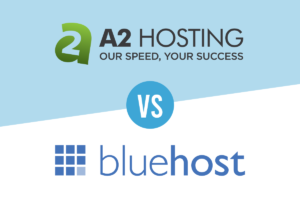So, you love writing and want to try your hand at copywriting for the web?
Not a bad idea! Online copywriting is an industry that offers a lot of opportunity and flexibility with projections to grow steadily over the next decade.
But like any job, getting started as a copywriter comes with its unique set of trials and tribulations. And for creative folks that love to write, one rude but necessary awakening comes on the day they realize that writing commercial content for an internet audience is worlds different from writing creative or academic texts.
Writing effective webcopy requires understanding how users read online. More precisely, writing effective webcopy requires understanding that users don’t read online.
And here are the receipts that prove it.
32 facts and stats that will make you a better copywriter
Concept 1: People Scan & Skim Most of the Time
Say it with me: 👏People👏do👏not👏read👏online👏
People don’t read web pages.
- A 2008 study found that users typically spend enough time on any given webpage in order to feasibly read about 28 percent of it. [D]
- The average visitation time for any webpage, regardless of length, is about 15 seconds. [G]
- For every additional 100 words on a page, visitors will spend an extra 4.4 seconds. This is only enough time to read about 18 of those 100 words. [D]
People don’t read their emails.
- A 2010 study found that the average user had 300 percent more unread emails in their inbox than four years prior. [A]
- In 2015, the average American adult had 500 unread emails in their inbox. [B]
- In 2018, the average time spent reading an email was about 13.4 seconds. [C]
- 15 percent of all emails are opened only long enough to be deleted (less than 2 seconds), and 23.5 percent are opened only long enough to be skimmed (2-8 seconds). [C]
People don’t read what their friends and favorite influencers share.
- An investigation into 10,000 news articles shared online showed that there is no relationship whatsoever between a piece of content’s virality and the amount of time the average user will spend reading it. [G]
- There is “no statistically significant correlation” between the length of an Instagram caption and user engagement with the post. [I]
People don’t read everything businesses and bloggers share.
- 60 to 70 percent of content produced for B2B marketing organizations sits around without generating any visitors. [E]
- A 2019 survey showed that 52 percent of bloggers reported feeling that it was becoming harder to get readers to engage with their content. [K]
The fact of the matter is, 79 percent of people usually don’t read web copy at all. Instead, they scan and skim [D].
The sooner an aspiring copywriter has understood this, the better and more happily they can do their jobs.
All that being said, the big idea is that with the deluge of content, the reader has to sift through all the options. Once they find something they like, they will read deeply. It's a very nuanced problem to solve. Your BEST customers and visitors will read everything you write in its entirety. The vast majority will quickly scan and decide if it's for them or not.
A mistake would be to take these stats and only produce cheap listicles. They may get you more eyeballs in the short term, but that volume wouldn't necessarily equate to better business results, unless you're literally Buzzfeed.
Understanding your audience: the case for scanning
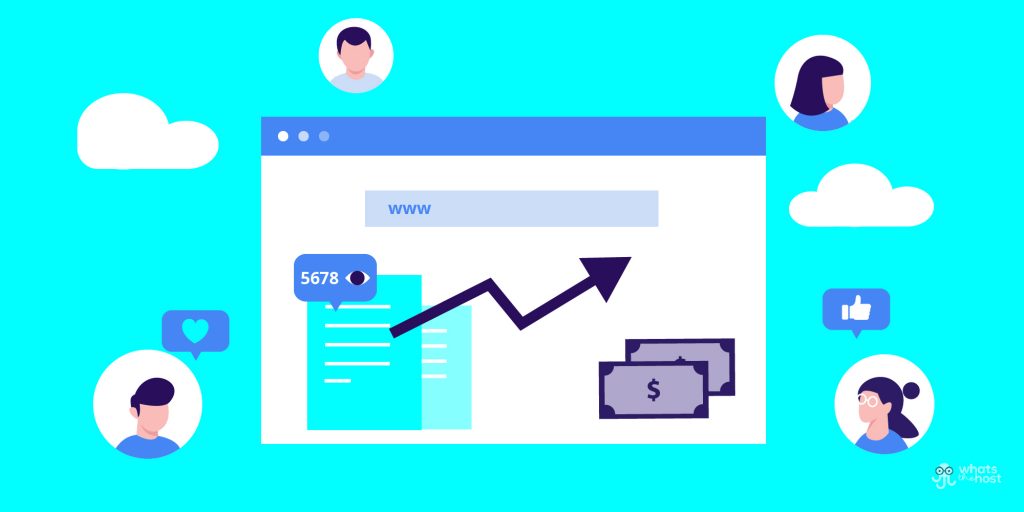
Scanning gets a bad rap for being shallow, fleeting, and a harbinger for the day our attention spans evaporate irrevocably. But scanning is actually pretty effective.
There are some pretty compelling reasons why we scan when we surf online:
- The average person reads 25 percent slower on screens than on paper. [D]
- Because online environments have so many distracting variables, online information consumption is characterized by the desire to minimize interaction costs. [M]
- Many webpage visits are goal-oriented. Often a single chunk of information is all that a user needs, and so it is all they will look for. [M]
And while users may not spend much time with your content, they don’t actually need very long to understand it. Or to be persuaded by it.
Users are quite good at quickly gathering the information they need and ignoring the information they don’t:
- For every 15 seconds of engagement with an online article, visitors were 30 percent more likely to correctly recall points from the piece. [H]
- Even just 60 seconds of engagement with an online opinion piece can impact users' opinions. Users that spent at least a minute reading an opinion article were 45 percent more likely to agree with the author than those who spent less than 15 seconds. [H]
The challenge for many beginning copywriters is learning how to write texts that are not meant to be read, but scanned.
Writing copy for scanning vs. reading
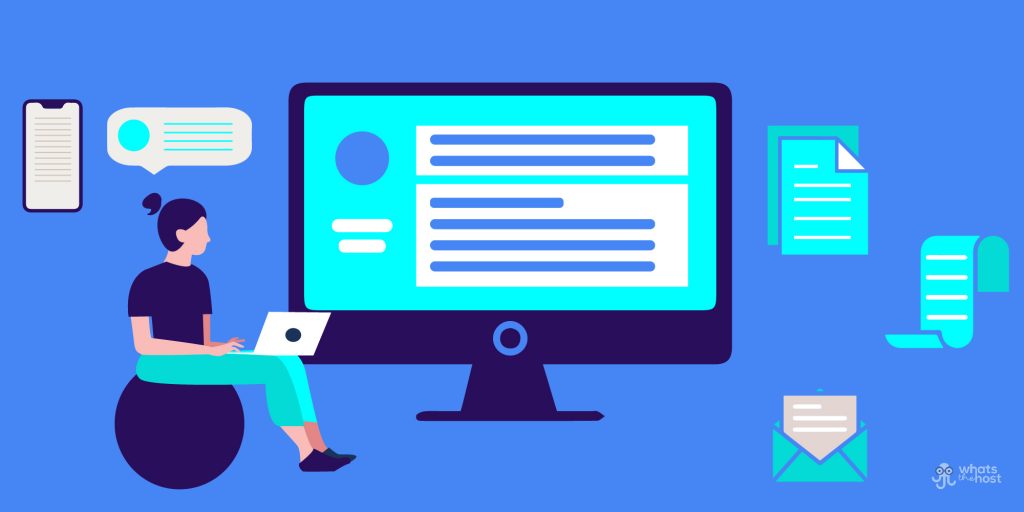
Writing concise, scannable content can boost a page’s usability by up to 58 percent [J].
But how exactly should you write copy that helps scanners collect information?
First of all, choose words that pack a punch and convey meaning:
- Longer words receive more reader attention. 2-3 letter words are skipped over nearly 3 out of 4 times. [F]
- Users are more than twice as likely to concentrate on content words (nouns, verbs, and adjectives that have meaning on their own) as opposed to function words (words that serve primarily grammatical purposes). [F]
Secondly, structure your copy so that the most important information is concentrated near the beginning, but after the introduction:
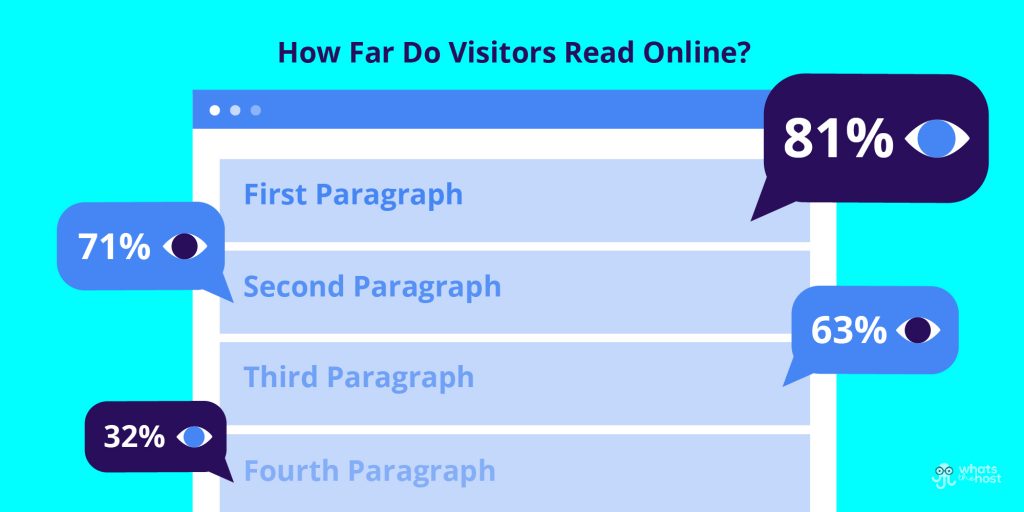
- The steepest drop-off in attention comes at the fourth paragraph of body text. While 81, 71, and 63 percent of users will make it through the first, second, and third paragraphs respectively, this number plummets to 32 percent by the fourth paragraph. [D]
- 66 percent of reader attention is spent below the fold, as a majority of people scroll right past the hero image and cursory introduction. [G]
Thirdly, never write prose where a list, visual, or statistic will do:
- People looked at 70 percent of the bulleted lists that they encounter online. [D]
- Colorful visuals make readers 80 percent more likely to read a document. [L]
- 93 and 60 percent of marketers reported including images and lists, respectively, improved the performance of their content. [K]
Finally, concise and scannable does not equal quick and dirty. Long-format content is still the standard, and writing this kind of content takes time:
- In 2019, the average blog post took 3 hours and 57 minutes to write. [K]
- In 2019, the average blog post was 1236 words long. [K]
The value of scannable copy
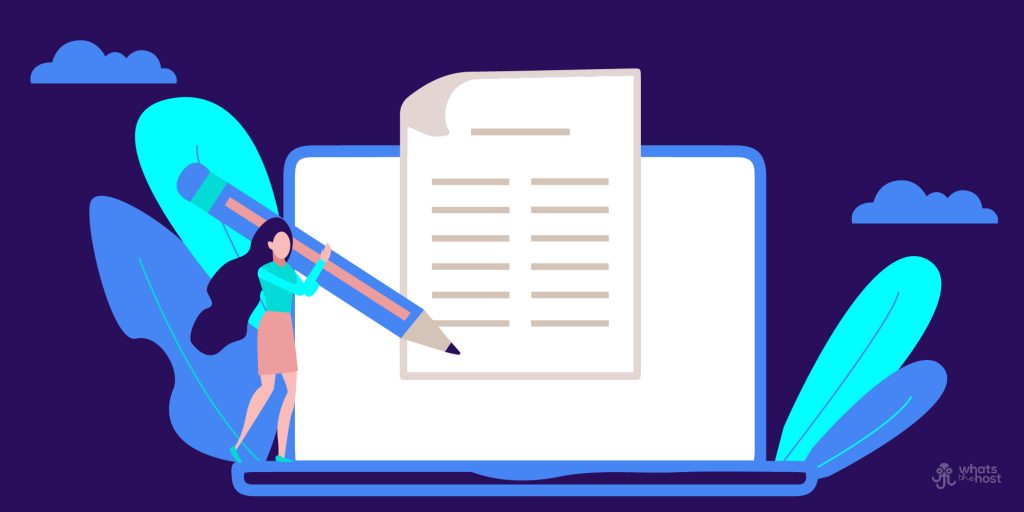
Does the thought of people only scanning your content turn you off the job of copywriting?
That’s understandable. But it doesn’t mean that the role of the copywriter is diminishing. If anything, it is more important today than ever.
Scannable, effective copy delivers huge performance wins for marketing departments.
- 30 percent of all internet users use adblockers, making organic content increasingly important vs. paid digital advertising. [N]
- Aside from audience segmentation, marketers named improved email copy as the most effective tactic for improving email engagement. [J]
- Creative and effective headline writing is crucial, as roughly 8 out of 10 visitors will only read the headline of a page or article. [O]
- Small tweaks to the wording of buttons and call-to-actions can dramatically improve conversion rates. [P]
- One study found that copywriting that included the world “because” and a reason could improve engagement by more than 50 percent. [Q]
In short, copywriters need to be masters in crafting texts that:
- concisely convey a lot of information
- are creative and engaging despite formatting, space, and style limitations
- approachably communicate compelling product and industry knowledge
- are built for precisely for the medium and audience
Doing this well isn’t easy. And there are some nifty apps that can help streamline things. But an understanding of how users read (or don’t read) online is the most valuable knowledge any beginning copywriter can possess.
SOURCES
[A] https://www.nngroup.com/articles/e-mail-newsletters-usability/
[B] https://today.yougov.com/topics/lifestyle/articles-reports/2015/06/04/inbox-zero
[C] https://www.litmus.com/resources/state-of-email-engagement/
[D] https://www.nngroup.com/articles/how-little-do-users-read/
[E] https://www.siriusdecisions.com/blog/its-not-content–its-a-lack-of-buyer-insights-thats-the-problem
[F] http://www.eyethink.org/resources/lab_papers/Richardson2004_Eye_tracking_C.pdf
[G] https://time.com/12933/what-you-think-you-know-about-the-web-is-wrong/
[H] https://blog.chartbeat.com/2014/12/22/engaged-time-affects-reading-comprehension/
[I] https://buffer.com/resources/instagram-marketing-tips-studies/
[J] https://www.nngroup.com/articles/concise-scannable-and-objective-how-to-write-for-the-web/
[K] https://www.orbitmedia.com/blog/blogging-statistics/
[L] https://www.office.xerox.com/latest/COLFS-02UA.PDF
[M] https://www.nngroup.com/articles/interaction-cost-definition/
[N] https://www.socialmediatoday.com/news/global-ad-blocking-behavior-2019-infographic/551716/
[O] https://copyblogger.com/writing-headlines-that-get-results/
[P] https://econsultancy.com/seven-tips-for-designing-an-effective-ecommerce-call-to-action/
[Q] https://www.amazon.com/Pre-Suasion-Revolutionary-Way-Influence-Persuade-ebook/dp/B01C36E2YS
Last Updated on October 26, 2021 by Joe



